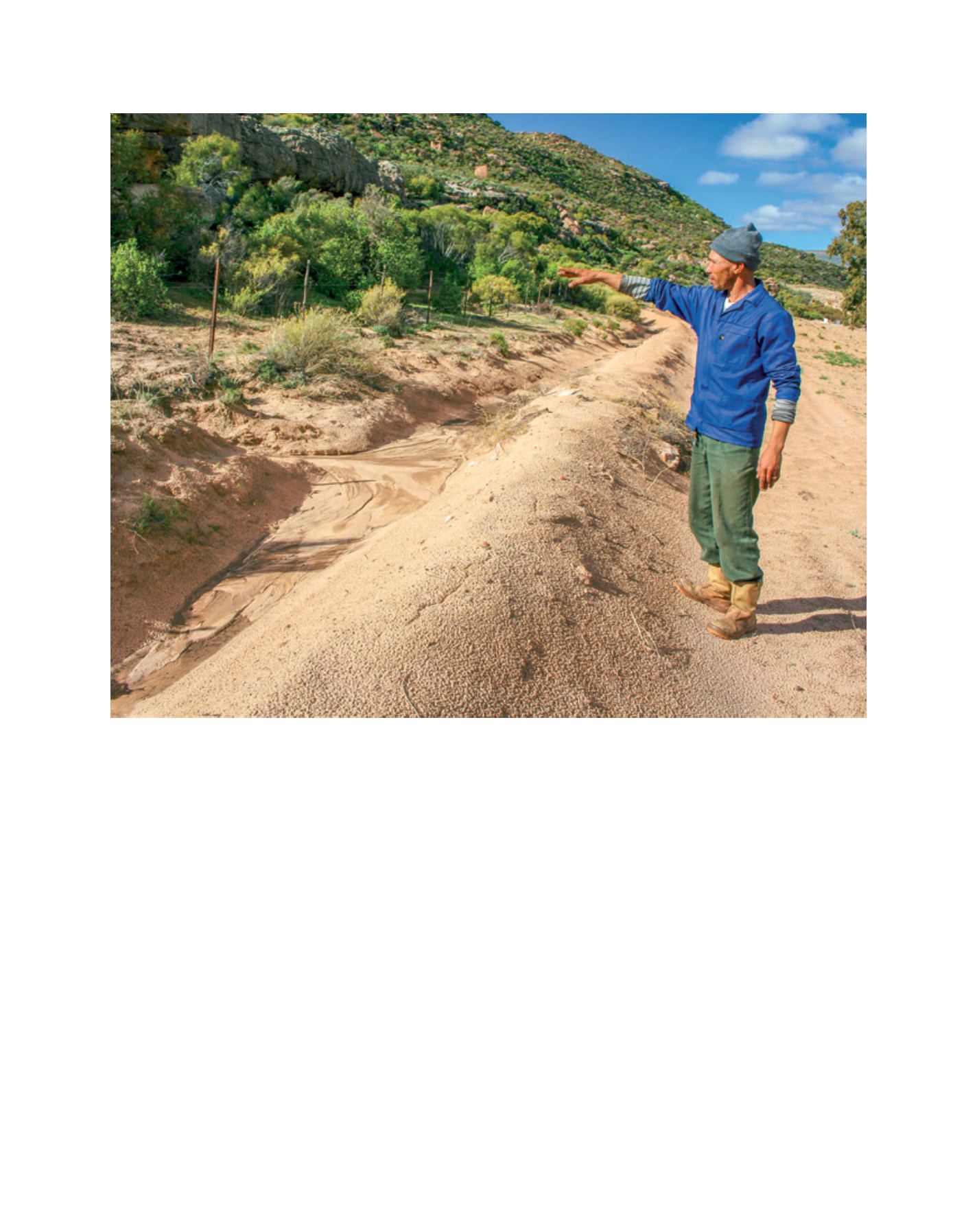

[
] 108
Injudicious ploughing of slopes and bottomlands in ways
that contributed to excessive run-off and soil erosion
removed thousands of tons of topsoil from relatively small
areas. Once it had lost productivity, the land was abandoned
and erosion carried on unchecked.
In 2008 the Avontuur property was purchased by the
World Wide Fund for Nature to conserve its unique biodi-
versity. The property is home to more than 500 plant
species, of which 34 are species of conservation concern
and eight are not conserved anywhere else. Since 2009 the
property has been leased to and managed by not-for-profit
company Avontuur Sustainable Agriculture, which manages
the property as a living landscape that is both productive
yet conserved. The approach has been to restore the hydro-
logical and ecological systems, particularly on the degraded
lands; actively rehabilitate the most degraded areas; facilitate
the gradual restoration of the indigenous flora on the old
lands and enable the farm to produce sustainably.
Independent researchers identified the causes and extent
of the degradation of the property, and recommended
actions that could be taken to rectify the situation. On the
basis of this a five-year programme of low-cost, replicable
rehabilitation has been undertaken on the property.
More than 90 per cent of the land surface of the property
is now stable and well conserved, and earthworm popula-
tions have rebounded on old plough lands. Nevertheless,
some areas have been deeply scarred by injudicious land
use, with erosion gullies up to 3 metres deep. The princi-
ples followed in restoring the land have been to keep as
much rainwater as possible in the landscape (preferably in
the soil), disperse and weaken the impact of raindrops and
run-off water, establish or retain vegetative cover, create
favourable conditions for earthworms and soil organisms,
prevent the loss of topsoil by water and wind erosion and
use ground cover to protect the soil and create favourable
conditions for the germination of seed.
The approach has been to provide opportunities for vegeta-
tion to re-establish in degraded areas. Run-off water has been
filtered so as to retain soil, seed and organic matter, and seed
collected on the property has been reintroduced to bare areas.
The unique nature of the soil/climate/vegetation nexus
on Avontuur is such that it was necessary to innovate and
Image: N Oettlé
Hartwig Oktober demonstrates how a contour bund spreads the run-off water from rocky cliffs adjoining his rooibos lands
L
iving
L
and
















